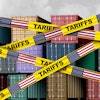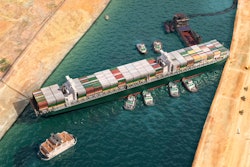
The vast world of maritime shipping is a crisscrossing patchwork of exchange routes, dotted with thousands of vessels that facilitate a whopping 90% of all international trade.
But, like the pathways they traverse, these cargo ships are pieces of a much larger, complex puzzle. Vessel ownership structures are a veritable web of corporate entities, whose current framework provides anonymity to owners who prefer to remain in the shadows. This has inevitably led to the capitalization of these structures for nefarious purposes, sanctions evasion, financial crimes and more, which affect the entire maritime supply chain.
With owners so easily hidden by various layers of authority, supply chain stakeholders need methods in place to ensure they are dealing with on-the-level partners.
The implementation of advanced artificial intelligence (AI) systems that can provide detailed ownership insights will allow companies across the maritime supply chain to avoid the legal, financial and reputational ramifications of illicit dealings. In today’s complex business environment, manual data analysis methods no longer suffice and the technology that can decipher vessel ownership structures is no longer a luxury, rather a necessity.
7 levels of ownership
Maritime vessel ownership is traditionally broken down into seven levels of ownership. Each entity plays a connected but unique role in the shipping process, often receiving or dictating instructions from or to the entity directly above or below them. In many cases, entities will not be easily visible, either to others further up and down the ownership structure or to outside observers.
Despite the surface level complication of this system, there are valid, legitimate reasons for the complex nature of maritime ownership. Vessel ownership and management are an immense financial undertaking for corporations, making it reasonable for them to employ third-party vehicles to limit liability, optimize tax planning and simplify financial reporting. Additionally, there are legitimate reasons for companies to use shell corporations, offshoring and flags of convenience in their shipping.
To be clear, none of these structures or tactics are illegal in and of themselves. But, the inherent convolution of the larger ecosystem makes them ripe for manipulation on the part of sanctioned entities and bad actors looking to disguise illicit activities.
Implications on the maritime supply chain
The latest advisories from U.S. Department of State, the U.S. Department of the Treasury’s Office of Foreign Assets Control (OFAC), Office of Financial Sanctions Implementation (OFSI) and Financial Crimes Enforcement Network (FinCen) specifically require organizations engaging in vessel-based business to establish the true identity of the entities they want to trade with, who the owners and managers are and whether they are trustworthy business partners. These new advisories make it clear that the world of maritime trade intends to change, but the market itself continues to rely on data sourced from flag registries and the like. These resources, while high in objective quality and brimming with archival data, are still far from offering the real-time insights needed to meet rapidly evolving advisories, and the old approach of collecting and collating data to extract relevant information is no longer sufficient in today's dynamic reality.
From blackbox to glassbox
As official regulations change and the technology needed to enforce them continues to improve, complex ownership structures are due to gain a much-needed level of transparency.
Greater transparency in the maritime shipping supply chain means companies can avoid potential supply chain issues, like hiring a vessel that is then sanctioned with cargo stuck on board. It also stands to lessen the liability and potential punitive penalties.
Ultimately, a transparent maritime ecosystem will have a deterrent effect on the entire industry, minimizing sanction evasions and optimizing business practices across the board.
Digital transformation is coming to the maritime trade industry
Today’s modern world is one of rapid innovation and hyperbolic changes. And, along with countless other sectors, industries and processes, so too is the supply chain ecosystem of maritime trade becoming more complicated as it becomes more advanced with ever-evolving sanctions.
Fortunately, the technology needed to fill the void that stands between requirements and practices is on the rise.
AI and Big Data are quickly removing the guesswork that for so long was involved in identifying well-hidden owners and exposing deceptive shipping practices. Machine learning algorithms can automatically detect anomalies in shipping like flag hopping and can predict the movements of vessels that deliberately turn off automatic identification system (AIS) tracking. And, thanks to this data, maritime players can now also find similarities in outwardly individual shell corporations such as shared emails, mailing addresses and phone numbers.
AI will be instrumental in easing the burdens of difficult but necessary regulatory work, traditionally done manually by compliance teams. Using AI, maritime stakeholders can customize sanction lists, flag risky business partners and streamline the entire process, reducing work that once required three days of investigating into minutes-long computations.
A transparent trade system is safer, more efficient and will enable the entire maritime supply chain to function properly. Its high time to let AI make a splash on the high seas.



















